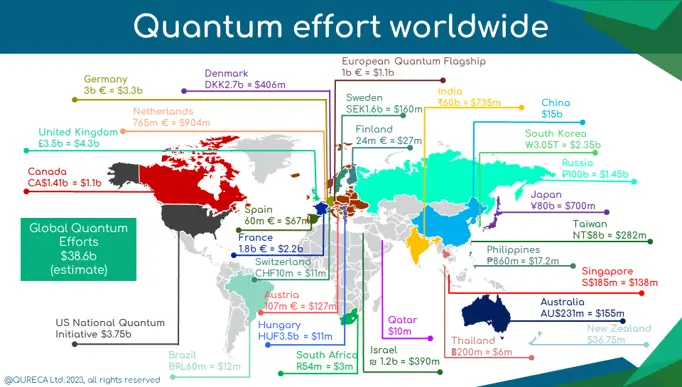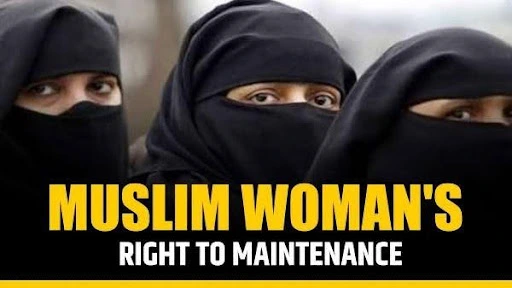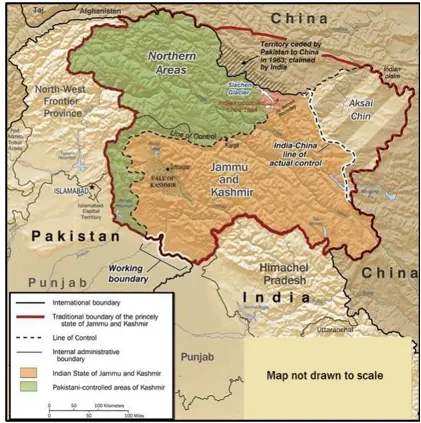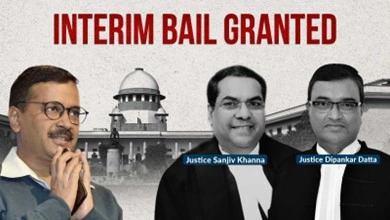Thursday, 18th July 2024
Centralised Examinations Have Not Aced the Test
Why in the news?
- In 2017, the Government of India established the National Testing Agency (NTA) to standardise and streamline the process of conducting entrance examinations for professional courses.
- Despite this promising start, the NTA has faced numerous challenges and criticisms, particularly in its handling of the National Eligibility cum Entrance Test (NEET-UG) and other key exams.
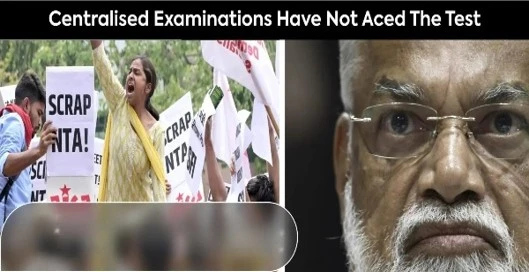
- Therefore, it is important to critically examine the NTA's shortcomings, the resulting trust deficit, and potential solutions, including decentralisation and reforms in the schooling system.
The Vision of National Testing Agency (NTA):
- Electronic Mode of Examination
- The NTA aimed to transition entrance exams from traditional pen-and-paper methods to electronic formats.
- This shift intended to reduce logistical complexities and vulnerabilities associated with manual processes, such as paper leaks and distribution errors.
- Specialised Expertise
- The NTA was to employ specialists in the science of testing.
- These experts were expected to develop robust question banks, create reliable evaluation frameworks, and ensure the validity and reliability of the examination process.
- Outsourced Operations
- To maintain a lean organisational structure, much of the NTA’s operational work was outsourced.
- This included tasks such as question paper setting, exam conduction, and evaluation, which were managed by external specialists and agencies.
Initial Challenges and Shortcomings Encountered by NTA:
- Pen-and-Paper Mode Persistence
- Contrary to the goal of conducting electronic examinations, many exams, including the NEET-UG, continued to be administered in the traditional pen-and-paper mode.
- This persistence introduced significant risks and opportunities for malpractice at various stages—from paper setting and printing to distribution and final delivery at examination centres.
- Leadership and Competence Issues
- The NTA's leadership structure raised concerns about its capability to fulfil its envisioned role.
- The agency was headed by a chairman and a chief executive officer, typically an Indian Administrative Service officer. Neither of these possess the specialised competence required to build and manage a testing institution of this scale and complexity.
- NEET-UG Fiasco
- The conduct of NEET-UG in particular exposed critical flaws in the NTA’s implementation.
- Widespread leakage of question papers, arbitrary awarding of grace marks, and selective re-examinations for a few students undermined the credibility of the entire process. These issues highlighted the agency’s inability to manage high-stakes examinations effectively.
- Operational Vulnerabilities
- The reliance on outsourced operations introduced vulnerabilities in the examination process.
- The coordination and oversight required to manage multiple external entities proved to be a significant challenge, leading to instances of malpractice and inefficiencies.
- Trust Deficit
- The culmination of these challenges resulted in a severe trust deficit among students, parents, and other stakeholders.
- The inability to conduct fair and transparent examinations eroded confidence in the NTA’s capabilities and intentions, prompting widespread calls for reform and restructuring.
Trust Deficit Created by the NEET-UG Fiasco and Broader Implications:
- Question Paper Leaks and Arbitrary Grace Marks
- Integrity Undermined: The widespread leakage of question papers severely undermined the integrity of the examination.
- Unfair Advantages: This not only gave unfair advantages to some students but also called into question the NTA’s ability to secure sensitive materials and conduct a fair exam.
- Inconsistent Grace Marks: The way grace marks were awarded appeared arbitrary and inconsistent.
- Confusion and Dissatisfaction: This led to confusion and dissatisfaction among students and parents, who felt that the grading system was neither transparent nor fair.
- Selective Re-examinations and Tampering with Results
- Selective Re-examinations: Conducting re-examinations for only a handful of students, rather than a comprehensive re-exam for all affected candidates, further eroded trust.
- Unfair Approach: This selective approach was seen as unfair and insufficient to address the widespread malpractice.
- Tampered Results: Instead of opting for a straightforward re-examination to rectify the issues, the NTA's tampering with results raised serious concerns about the credibility of the entire examination process.
- Deepened Distrust: This approach deepened the distrust among stakeholders.
- Legal Interventions and Loss of Confidence
- Significant Loss of Confidence: The repeated failures and mismanagement have led to a significant loss of confidence in the NTA.
- Questioned Ability: Students, parents, and educational institutions now question the agency's ability to conduct fair and transparent examinations, which are crucial for career decisions and academic progression.
- Supreme Court Intervention: The Supreme Court of India had to step in to address the numerous petitions filed by aggrieved students and parents.
- Severity of Trust Deficit: Such legal interventions underscore the severity of the trust deficit and the failure of the NTA to manage the examination process effectively on its own.
- Counselling Delays and Economic and Social Impact
- Counselling Process: The government's decision to proceed with the counselling process despite unresolved issues has added to the anxiety and uncertainty among students.
- Impact on Admissions: Since rank is critical for securing admissions to government institutions that offer quality education at subsidised rates, any tampering with the results can have a profound impact on students’ futures.
- Financial Burden: Students who fail to secure admission in government institutions due to mismanagement are often forced to opt for private institutions that charge exorbitant fees.
- Socio-economic Disparities: This financial burden can be overwhelming for many families, further exacerbating socio-economic disparities.
- Erosion of Meritocracy
- Meritocracy Undermined: The primary objective of standardising entrance examinations was to promote meritocracy by ensuring that only the most deserving students gain admission to professional courses.
- Perception of Rigged System: However, the current situation has led to a perception that the system is rigged, and that merit alone is not sufficient to succeed.
Ways Ahead to Restore Trust in the Examination System:
- Need for a Decentralised Testing Mechanism
- Frequent Cheating and Leakages: The frequent reports of cheating and leakages in national-level examinations suggest that a decentralised testing mechanism might be more effective.
- State-level Exams: Decentralisation would allow states to conduct their own entrance exams based on a standard template set by the central government.
- Mitigate Risks: This approach could mitigate the risks associated with centralised testing and ensure that standards are maintained across various states.
- Enhanced Fairness: Incorporating domain experts, testing specialists, and IT security measures would further enhance the fairness and integrity of the examinations.
- Revamping the Schooling System
- Decline of Traditional Schooling: The emergence of national-level entrance examinations has inadvertently led to the decline of the traditional schooling system, with the rise of coaching centres overshadowing the importance of school education.
- Integration of School-leaving Marks: To address this, integrating a percentage of school-leaving marks into the entrance examination score could restore the value of school education.
- Balanced Evaluation: This approach, previously implemented for the Indian Institutes of Technology entrance exams, emphasises the importance of academic competency, hard work, and values built at the school level.
Steps Taken by the Government:
- Institutional Initiatives:
- A reform committee led by Dr. K. Radhakrishnan has been appointed to recommend enhancements to the NTA's exam processes.
- Pradeep Singh Kharola has been appointed as the new chief of NTA.
- The education ministry has requested a detailed report from Bihar Police’s Economic Offences Unit regarding alleged irregularities in the NEET (UG) 2024 exam held in Patna.
- Strengthening Security and Processes:
- The government has recognized the need to enhance the NTA’s security infrastructure, adopt advanced technologies, and improve the overall efficiency and transparency of its examination processes.
- In response to the controversy over grace marks, the NTA retracted the grace marks given to 1,563 students and offered them the option to take a re-test.
Conclusion
The NTA was established to standardise entrance examinations in India, but its execution has faced significant challenges, resulting in a trust deficit. Reforms, including decentralising the testing mechanism and rejuvenating the schooling system, are necessary to address these issues.
|
UPSC Civil Services Examination PYQ Mains: Q:1 National Education Policy 2020 conforms with the Sustainable Development Goal-4 (2030). It intends to restructure and reorient the education system in India. Critically examine the statement. (2020) Q:2 The quality of higher education in India requires major improvement to make it internationally competitive. Do you think that the entry of foreign educational institutions would help improve the quality of technical and higher education in the country? Discuss. (2015) |
Source: TH
EC releases technical instructions to check EVM
Why in the news?
- The Election Commission of India (ECI) has released a technical Standard Operating Procedure (SOP) for verifying burnt memory or microcontrollers in Electronic Voting Machines (EVMs) and Voter Verified Paper Audit Trail (VVPAT) devices.
- This follows a Supreme Court verdict and aims to ensure the integrity and transparency of elections by accurately verifying votes through electronic and paper means.

Burnt Memory of EVMs and VVPAT Units:
- The burnt memory in Electronic Voting Machines (EVMs) and Voter Verified Paper Audit Trails (VVPATs) refers to their non-volatile memory where data is stored permanently, even when the devices are powered off.
- This memory holds critical information such as:
- EVMs: Records of votes cast during the election, the machine's configuration, and other operational details.
- VVPATs: Printed records of votes cast by voters, serving as a verifiable paper trail for electronic votes.
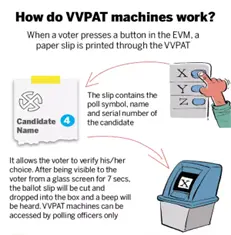
Background:
- SC Verdict:
- On April 26, 2024, the Supreme Court upheld the use of EVMs and VVPATs in Lok Sabha elections, rejecting calls for a return to paper ballots
- Mandating verification of burnt memories for up to 5% of machines per Assembly or Lok Sabha constituency segment.
- Verification of burnt memories is conducted post-election by engineers from EVM manufacturers.
- Allowing candidates to identify specific machines for verification by polling station or serial number and to be present during the process.
- Requests for Verification:
- Must be made within seven days of result declaration, with costs borne by candidates and refunded if tampering is detected.
- Administrative and Technical SOP:
- An administrative SOP was released on June 1, outlining organisational tasks to ensure consistency and compliance.
- A technical SOP specifies detailed procedures and operations, providing step-by-step instructions to maintain quality and safety standards during verification.
- Applications for Verification:
- Eight Lok Sabha candidates and three State Assembly candidates from Odisha and Andhra Pradesh applied for verification of burnt memory, highlighting early interest and compliance with the new procedures.
Key Highlights of the SOP:
- Verification Process:
- The SOP provides a detailed procedure for verifying the integrity of microcontrollers in EVMs and VVPATs.
- The Election Commission of India (ECI) utilises various technical methods to ensure the accuracy of firmware burned into microcontrollers, typically in research or secure manufacturing settings.
- Public verification involves using multiple random test vectors as inputs and assessing their expected outcomes.
- Mock Poll of Up to 1,400 Votes per Machine:
- A mock poll involving up to 1,400 votes per machine is conducted in the presence of candidates or their representatives.
- On polling day, a mock poll with a minimum of 50 votes per machine is conducted in the presence of candidates' polling agents, ensuring self-diagnosis and mutual authentication of the EVM-VVPAT system.
- Consistency between the results of machines and VVPAT slips confirms the integrity of burnt memory or microcontrollers, indicating no tampering.
- Powers Assigned to Candidates:
- Candidates have the authority to select the polling stations, EVMs, Ballot Units (BUs), Control Units (CUs), and VVPATs for verification.
- Trained engineers from EVM manufacturers such as Bharat Electronics Ltd (BEL) and Electronics Corporation of India Ltd (ECIL) conduct the verification process.
When Will the Verification Process Start?
- Verification of EVMs and VVPATs will commence once the High Courts confirm that no Election Petitions have been filed for the relevant constituencies.
- Election Petitions can be filed within 45 days of the election results, which were announced on June 4, making July 19 the deadline.
- As of now, 11 applications covering 118 polling stations or sets of EVMs and VVPATs have been received.
Criticism of the Technical SOP:
- Mismatch Handling: Critics have pointed out that the SOP does not address what would happen if there were a discrepancy between the counts of EVMs and VVPATs during verification.
- Progress on Mock Polls: Experts argue that the SOP does not innovate beyond the existing practice of conducting mock polls before elections, which are already standard procedure.
- Judgement vs. SOP: The Supreme Court's judgement emphasised the need to check and verify burnt memory or microcontrollers, but this requirement is not explicitly mentioned in the SOP, raising concerns among stakeholders.
|
UPSC Civil Services Examination Previous Year Questions (PYQ) Prelims: Q.1 Consider the following statements: (2017)
Which of the statements given above is/are correct?
Ans: (d)
Mains: Q:1 To enhance the quality of democracy in India the Election Commission of India has proposed electoral reforms in 2016. What are the suggested reforms and how far are they significant to make democracy successful? (2017) |
Source: IE
Govt’s U-Win portal to redraw immunisation map
Why in the news?
- The Indian government is set to launch U-Win, a digital platform on August 15, aimed at transforming maternal and child healthcare across the country.
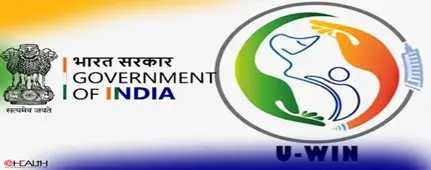
- By digitising vaccination records, U-Win will replace the current manual system used by ASHA and other healthcare workers, marking a significant shift in how primary healthcare is delivered.
What is the Universal Immunization Programme (UIP)?
- About: UIP is India's extensive public health program targeting around 2.67 crore newborns and 2.9 crore pregnant women annually.
- Impact: It is one of the most cost-effective interventions in public health, contributing significantly to the reduction of vaccine-preventable under-5 mortality rates.
- Vaccines Covered:
- UIP provides free immunisation against 12 vaccine-preventable diseases nationally, including Diphtheria, Pertussis, Tetanus, Polio, Measles, Rubella, severe Childhood Tuberculosis, Hepatitis B, and Meningitis & Pneumonia caused by Haemophilus Influenza type B.
- It also covers Rotavirus diarrhoea, Pneumococcal Pneumonia, and Japanese Encephalitis sub-nationally.
- Key Milestones of UIP:
- UIP's major achievements include the eradication of polio in 2014 and the elimination of maternal and neonatal tetanus in 2015.
About the U-Win:
- About: U-Win replicates the successful Co-WIN system used for managing COVID-19 vaccinations.
- Current Status: It is currently in pilot mode across all states and Union Territories except West Bengal.
- Function: U-Win will digitally record all vaccination events for pregnant women and children aged 0-5 years, ensuring timely administration of routine immunizations under the UIP.
How Does U-Win Work?
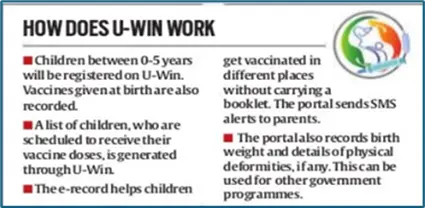
- Registration and Recording:
- Children aged 0-5 years are registered on U-Win, with vaccines administered at birth also recorded.
- The platform generates schedules for vaccine doses for children.
- It eliminates the need for physical vaccination booklets by sending SMS alerts to parents and guardians.
- Health Data Management:
- U-Win records birth weight and notes any physical deformities, aiding in other government health programs.
Features:
- Digital Certificates: Generates QR-based e-vaccination certificates similar to COVID vaccination certificates, accessible with a single click.
- Real-time Updates: Updates vaccination status and delivery outcomes in real-time.
- Citizen Engagement: Allows self-registration via web portal or mobile app, selection of vaccination centres, and appointment scheduling.
- SMS Alerts: Sends automated SMS alerts for registration confirmation, administered doses, and upcoming dose reminders.
- Health Record Integration: Facilitates Ayushman Bharat Health Account (ABHA) IDs for comprehensive health record maintenance.
- Frontline Support: Assists frontline workers in digitally recording vaccination events for accurate and easy record management.
Benefits:
- Reducing Zero-dose Children: Real-time registration and digital vaccination records help reduce the number of "zero-dose" children.
- Accessibility for Migrants: Benefits migrant workers by allowing vaccinations at any centre nationwide without carrying physical vaccination cards.
- 2030 Goals: U-Win aims to halve the number of zero-dose children by 2030.
- Comprehensive Records: Includes details of children, pregnant women, health centres, and community health workers due for vaccinations.
Status of Childhood Immunization in India:
- Report:
- According to the latest WHO and UNICEF estimates of national immunisation coverage (WUENIC), childhood immunisation in India experienced a slight decline in 2023 compared to 2022.
- DPT Vaccine Coverage:
- There was a decrease of two percentage points in the coverage of the diphtheria, pertussis, and tetanus (DPT) vaccine, dropping from 95% in 2022 to 93% in 2023.
- Globally, the average coverage for DPT in 2023 was 89%.
- Zero-dose Children:
- The coverage of the DPT vaccine serves as an indicator for zero-dose children, who have not received any routine immunisation.
- In 2023, India reported 1.6 million zero-dose children, up from 1.1 million in 2022, but lower than the 2.73 million reported in 2021.
- Under-vaccination Proxy:
- Coverage of the third dose of the DPT vaccine, used as a proxy for under-vaccination, was 91% in 2023.
- This represents a two-percentage point decrease from the previous year but remains higher than the global average of 84%.
- Absolute Numbers:
- In 2023, approximately 0.4 million children in India remained under-vaccinated, a slight decrease from 2.11 million in 2019.
|
UPSC Civil Services Examination Previous Year Question: Prelims: Q:1 ‘Mission Indradhanush’ launched by the Government of India pertains to (2016)
Ans: A |
Source: IE
PM SHRI (PM Schools for Rising India) Scheme
Why in the news?
- The PM SHRI (PM Schools for Rising India) Scheme is a centrally sponsored initiative by the Government of India aimed at establishing more than 14,500 schools across the country.
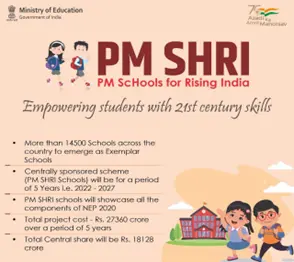
- It aims to provide an inclusive and nurturing environment for all students, promoting their well-being and ensuring access to quality learning experiences and infrastructure.
What is PM-SHRI?
- About: Full Name: PM Schools for Rising India Scheme. Ministry: Ministry of Education. Launch Date: September 5, 2022
- Objective: Establish over 14,500 PM SHRI Schools to provide inclusive education and foster a secure and enriching learning environment for students.
- School Involved: These schools, overseen jointly by the Central Government, State/UT Governments, local bodies, Kendriya Vidyalaya Sangathan (KVS), and Navodaya Vidyalaya Samiti (NVS).
- Maximum Schools: UP has the most PM SHRI schools (1,865) followed by Maharashtra (910) and Andhra Pradesh (900).
- Three outlier states: Delhi, Punjab and West Bengal.
- Alignment: Aligned with the National Education Policy 2020, promoting equity, inclusivity, and pluralism.
- Implementation: Schools selected through Challenge Mode competition for support to become exemplar institutions.
- Funding: Total project cost of Rs 27,360 crore over five years, with a central share of Rs 18,128 crore.
- Duration: Operational from 2022-23 to 2026-27, with subsequent maintenance by States/UTs to sustain achieved standards.
Key Objectives and Key Features of the PM SHRI Scheme:
- Exemplar and Mentorship Role:
- PM SHRI schools will serve as exemplary institutions, showcasing best practices in education.
- They will also mentor other schools in their vicinity to raise overall educational standards.
- Holistic Development:
- Focus on qualitative teaching, learning, and cognitive development.
- Aim to cultivate well-rounded individuals with essential 21st-century skills.
- Innovative Pedagogy:
- Pedagogical approaches include experiential, holistic, play/toy-based (especially in foundational years), inquiry-driven, and learner-centred methods.
- Emphasis on achieving proficiency in learning outcomes for all students.
- Competency-Based Assessment:
- Assessments will evaluate conceptual understanding and application of knowledge in real-life contexts.
- Shift towards competency-based assessments over rote learning.
- Modern Infrastructure:
- Equipped with modern facilities such as labs, smart classrooms, libraries, sports equipment, and art rooms.
- Ensures inclusivity and accessibility for all students.
- Green Schools:
- Development as green schools promoting initiatives like water conservation, waste recycling, and energy-efficient infrastructure.
- Integration of an organic lifestyle into the curriculum.
- Teacher Training and Capacity Building:
- Teachers trained in innovative pedagogical methods focusing on experiential, holistic, and learner-centred approaches.
- Continuous professional development to enhance teaching skills and methodologies.
- Equitable and Inclusive Education:
- Provides high-quality education in an equitable, inclusive, and joyful environment.
- Addresses diverse backgrounds, multilingual needs, and varying academic abilities of students, engaging them actively in the learning process
Alignment with NEP 2020:
- The PM-SHRI scheme is closely aligned with the vision of the National Education Policy 2020, which emphasises:
- Experiential learning.
- Competency-based education.
- Inclusive and equitable education.
- Integration of technology in education.
- Focus on holistic development and 21st-century skills.
Conclusion
The PM-SHRI scheme is pivotal in transforming India's education landscape, promoting comprehensive quality education. It will enhance educational policies, practices, and implementation strategies, with insights from these schools guiding nationwide improvements.
|
UPSC Civil Services Examination, Previous Year Questions (PYQs) Mains Q:1 National Education Policy 2020 is in conformity with the Sustainable Development Goal-4 (2030). It intends to restructure and reorient the education system in India. Critically examine the statement. (2020) |
Source: IE
India’s G20 Task Force on Digital Public Infrastructure
Why in the news?
- Recently, the final 'Report of India’s G20 Task Force on Digital Public Infrastructure' emphasised that India should identify a body to promote Digital Public Infrastructure (DPI) in the Global South.
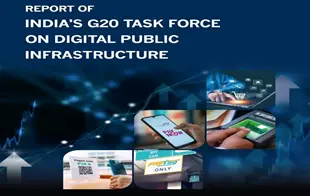
G20’s Recognition:
- The Prime Minister of India announced a $25-million investment to develop DPI, emphasising its importance for inclusive growth.
- G20 established the Digital Public Infrastructure Repository featuring over 50 DPIs from 16 countries to facilitate global knowledge sharing and adoption, especially in the Global South.
- At the G20 Summit, India showcased its digital capabilities, including Aadhaar, UPI, and Digi Locker, which empower citizens, enhance financial inclusion, and drive economic transformation.
About Digital Public Infrastructure (DPI):
- DPI refers to foundational digital systems and services enabling connectivity, data exchange, and digital transactions across sectors.
- It includes both hardware (networks, servers, devices) and software (platforms, protocols, applications).
- DPI supports online payments, identity verification, e-governance, and healthcare services.
India's Role in Promoting Digital Public Infrastructure (DPI):
- India leads in DPI with initiatives like Aadhaar (world’s largest biometric identity system), UPI (Unified Payments Interface), and Digi Locker (cloud-based document storage).
- Programs such as NOFN, Digital India, National Broadband Mission, and National Data Centre Policy underpin a robust digital infrastructure.
- The JAM trinity (Jan Dhan-Aadhaar-Mobile) has created millions of new bank accounts and streamlined direct benefit transfers, reducing leakages and ensuring targeted welfare delivery.
- Initiatives like Ayushman Bharat Mission and Unified Logistics Interface Platform are transforming healthcare and logistics sectors.
- The National e-Governance Plan (NeGP) provides a one-stop platform for services from birth certificates to land records, streamlining processes and enhancing transparency.
- Over 1.38 billion digital identities have been registered in India, demonstrating the scale and impact of these systems.
- Challenges include lack of infrastructure access, digital divide, affordability, language barriers, disabilities, privacy and security concerns, and geographical disparities.
Recommendations from India’s G20 Task Force:
- The task force recommends India take on a greater role in promoting DPI globally.
- India should identify an existing body (preferably with global reach) to harness the DPI ecosystem for policy formulation, strategy implementation, and technical expertise.
- Integrating AI with DPIs can amplify their capabilities, but ethical use and data privacy must be maintained.
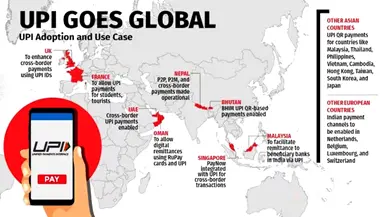
Conclusion
DPI is not just about technology; it’s about empowering people, improving governance, and fostering economic growth. As a leader in this space, India must collaborate globally to ensure DPI benefits everyone, especially in the Global South.
|
UPSC Civil Services Examination, Previous Year Questions (PYQs) Prelims Q:1 In India, the term “Public Key Infrastructure” is used in the context of (2020)
Ans: (a) |
Chandipura Virus Infection
Why in the news?
- Recently, the Gujarat government reported that six children have died from suspected Chandipura virus (CHPV) infection in the state since July 10.
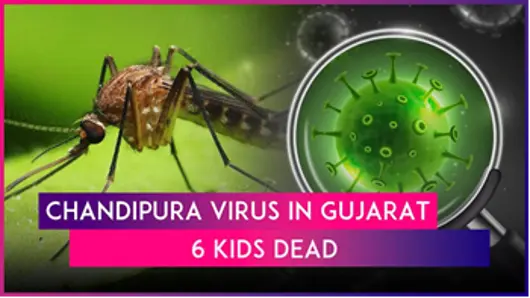
About Chandipura Virus Infection:
- CHPV is a virus belonging to the Rhabdoviridae family, which also includes the lyssavirus responsible for rabies.
- Several sandfly species, such as Phlebotomine sandflies and Phlebotomus papatasi, along with mosquito species like Aedes aegypti (also a dengue vector), are known vectors of CHPV.
- The virus resides in the salivary glands of these insects and can be transmitted to humans or other vertebrates, including domestic animals, through bites.
- The infection caused by CHPV can reach the central nervous system, leading to encephalitis (inflammation of the brain's active tissues).
- Disease progression can be rapid, with patients reporting high fever in the morning and experiencing kidney or liver complications by the evening.
Symptoms:
- CHPV infection initially presents with flu-like symptoms, such as acute onset of fever, body ache, and headache.
- It can then progress to altered sensorium, seizures, and encephalitis.
- Other reported symptoms include respiratory distress, bleeding tendencies, and anaemia.
- The infection often progresses rapidly after encephalitis, potentially leading to mortality within 24-48 hours of hospitalisation.
- This infection has largely affected children under 15 years of age.
Treatment:
- Currently, there is no specific antiretroviral therapy or vaccine for CHPV, so treatment focuses on symptomatic management.
Which are the worst affected regions in India?
- Maharashtra: CHPV was first isolated during investigations into a dengue and chikungunya outbreak in Maharashtra in 1965. The state has witnessed significant outbreaks over the years.
- Gujarat: During the outbreak in 2004, Gujarat reported a particularly high case fatality rate (CFR) of around 78%. This underscores the severity of the virus in the state during that period.
- Andhra Pradesh: In 2003, Andhra Pradesh also experienced a notable outbreak, with a CFR estimated at around 55%.
|
UPSC Civil Services Examination PYQ Prelims Q:1 Which of the following statements is not correct? (2019)
Ans: (b) |
Source: IE
ASMITA Project
Why in the news?
- Recently, the Ministry of Education and the University Grants Commission (UGC) recently introduced the ASMITA Project to enhance the availability of educational resources in Indian languages.
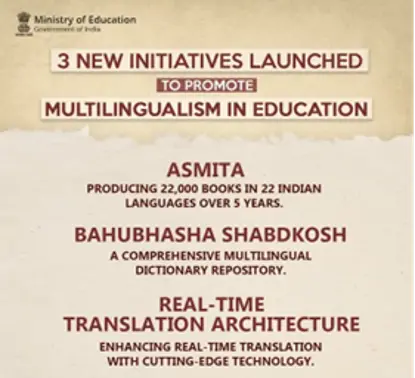
About ASMITA Project:
- ASMITA (Augmenting Study Materials in Indian Languages through Translation and Academic Writing) aims to develop 22,000 books in Indian languages over the next five years.
- It is a collaborative effort between the UGC and the Bharatiya Bhasha Samiti, a high-powered committee under the Ministry of Education.
- The primary objective is to promote and integrate Indian languages more deeply into the education system, enriching the learning experience and making it more inclusive.
- This project is part of a broader strategy to enhance the accessibility and quality of educational materials across various Indian languages.
- Thirteen nodal universities have been identified to lead the project, along with member universities from various regions.
- The UGC has created a standard operating procedure (SOP) for the book-writing process in each assigned language.
- The SOP includes identifying nodal officers and authors, allocating title, subject, and programme, writing and editing, submission of the manuscript, review and plagiarism check, finalisation, designing, proofreading, and e-publication.
Other Initiatives Launched:
- The Ministry of Education also launched the "Bahubhasha Shabdakosh," a single-point reference for all the words in all Indian languages and their meanings.
- This initiative will be developed by the Central Institute of Indian Languages (CIIL) in collaboration with the Bharatiya Bhasha Samiti.
- The Shabdakosh will help in using Bharatiya words, phrases, and sentences for various new-age domains like IT, industry, research, and education.
Source: TH
Jerdon’s Courser
Why in the news?
- Recently, Jerdon’s Courser, a critically endangered species, has not been visually spotted in over a decade.

About Jerdon’s Courser:
- Scientific Name: Rhinoptilus bitorquatus
- Habitat: It inhabits open patches within scrub forests.
- Distribution: Found only in Andhra Pradesh and Telangana.
- Features:
- It is a nocturnal cursorial (adapted for walking and running) bird endemic to the Eastern Ghats of India.
- It was considered extinct from the beginning of the 20th century until its rediscovery in 1986.
- It is a delicate lapwing-like bird with a large eye and a short, bicolored bill.
- Its upper plumage is grey-brown, chin and throat are whitish, fore-neck is rufous, and separated from its brown breast by a white band.
- A second white band runs across the lower portion of its breast (hence it was earlier called a double-banded courser).
- The belly is whitish, while its tail is black-and-white (visible in flight). The legs are pale yellow.
- The call is a short series of two-noted whistles “tuick-tuoo.”
- They are insectivorous, hunting invertebrates by sight.
Conservation Status:
- IUCN Red List: Critically Endangered.
Source: TOI
Halwa Ceremony
Why in the news?
- Recently, the Union Finance Minister participated in a traditional ‘halwa’ ceremony, marking the final stage for preparation of Union Budget 2024-25 to be unveiled on July 23 in Lok Sabha.
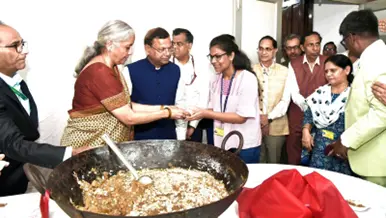
About Halwa Ceremony:
- Ritual: The ceremony involves the preparation and serving of the traditional dessert ‘halwa’ to officials and staff members of the finance ministry involved in the Budget preparation.
- Significance: It serves as a ‘send-off’ for finance ministry officials and staff who are involved in the preparation of the Union government’s annual financial statement.
- Lock-in Period: Following the ceremony, these officials and staff enter a ‘lock-in’ period, staying in the basement of North Block, cut off from the outside world to maintain the secrecy around the final budget document.
- Historical Context: The stringent measures date back to a leak in 1950, when a portion of the Union Budget was leaked while being printed at Rashtrapati Bhawan. As a result, the then Finance Minister, John Matthai, resigned.
Key Facts about the Union Budget of India:
- Annual Financial Statement: The Union Budget of India, referred to as the Annual Financial Statement under Article 112 of the Constitution of India, is the annual budget of the Republic of India.
- Terminology: Although it is known as the Annual Financial Statement of the Government, the term "budget" is not mentioned in the Constitution.
Source: IE
China+1 Strategy
Why in the news?
- India has the opportunity to capitalise on the China Plus One strategy and attract global manufacturing investments.
- While China's exports remain strong, India's large domestic market, low-cost talent, and potential for growth make it an appealing alternative.
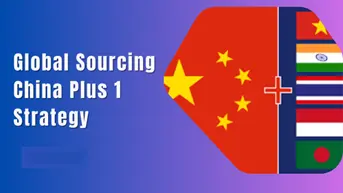
What is the China+1 Strategy?
- About:
- The China+1 strategy approach aims to mitigate risks associated with over-reliance on a single country, particularly in light of geopolitical tensions and supply chain disruptions.
- China's Dominance in Global Supply Chains:
- China has been the epicentre of global supply chains for decades, earning the title of "World's Factory" due to favourable factors of production and a strong business ecosystem.
- Shift to China in the 1990s:
- In the 1990s, large manufacturing entities from the US and Europe moved production to China, attracted by low manufacturing costs and access to a vast domestic market.
- Disruptions During the Pandemic:
- China's zero-Covid policy led to industrial lockdowns, resulting in inconsistent supply chain performance and container shortages.
- Evolution of the China+1 Strategy:
- Factors such as China's zero-Covid policy, supply chain disruptions, high freight rates, and longer lead times have prompted global companies to adopt a "China-Plus-One" strategy.
- This strategy involves exploring in other developing Asian countries, such as India, Vietnam, Thailand, Bangladesh, and Malaysia, to diversify supply chain dependencies.
What are the Opportunities for India to Attract the Foreign Investment?
- Demographic Dividend and Consumption Power:
- Youthful Demographic: India boasts a youthful demographic with 28.4% of the population under 30 in 2023, compared to China's 20.4%
- Economic Potential: This demographic advantage positions India as a potential multi-trillion-dollar economy, making it an attractive market for global companies.
- Cost Competitiveness and Infrastructure Advantage:
- Lower Labor and Capital Costs: India's production sector is highly competitive, with average manufacturing wages 47% lower than China's, as highlighted by a 2023 Deloitte study.
- Infrastructure Investment: The government's heavy investment in infrastructure through the NIP aims to reduce manufacturing costs and improve logistics by 20%, further enhancing India's attractiveness.
- Business Environment and Policy Initiatives:
- Policy Reforms: Recent interventions like the Production Linked Incentive (PLI) scheme, tax reforms, and relaxed FDI norms have created a conducive business environment.
- Make in India Initiative: Coupled with efforts to promote ease of doing business, the Make in India initiative is attracting foreign investments.
- Digital Skilling and Technological Edge:
- High Internet Penetration: As of January 2024, India has 870 million internet users, representing 61% of its population.
- Access to Global Tech Giants: Access to global tech giants like Google and Facebook, which are unavailable in China, gives Indian youth a digital advantage.
- Strategic Economic Partnerships:
- Sub-Regional Partnerships: India's focus on sub-regional partnerships and controlling China's influence through initiatives like the CEPA trade agreement with the UAE demonstrates its strategic approach.
- Trade Diversification: This diversification is expected to increase bilateral trade by 200% within 5 years, ensuring access to new markets while protecting domestic interests.
- Dynamic Diplomacy and Global Influence:
- Active Participation in Global Groupings: India's participation in groupings like QUAD and I2U2, along with bilateral agreements with key countries, strengthens its economic ties.
- Leadership Roles: As India assumes leadership roles in G20 and SCO, it can leverage its position to shape global trade trends.
- Large Domestic Market:
- Massive Consumer Base: India's domestic market of 1.3 billion people with rising incomes offers a compelling alternative to China.
- Economic Growth: India's GDP per capita has grown at an average of 6.9% between 2018 and 2023, providing a strong foundation for sustained economic growth and increased global trade.
Sectors Benefiting from the China+1 Strategy in India:
- Information Technology/Information Technology Enabled Services (IT/ITeS):
- Key Player in IT Services: According to a 2024 NASSCOM report, India is recognized as a key player in IT services exports.
- Make in India Initiative: The "Make in India" initiative aims to establish India as a manufacturing hub for IT hardware, attracting major global technology firms.
- Pharmaceuticals:
- Large-Scale Industry: Valued at Rs 3.5 lakh crore in 2024, India's pharmaceutical industry is the world's third largest by volume.
- Global Supplier: India supplies nearly 70% of WHO's vaccine needs and offers manufacturing costs 33% lower than the US, earning the title "pharmacy of the world."
- Metals and Steel:
- Natural Resources: India's rich natural resources position it as a major steel exporter.
- PLI Scheme for Specialty Steel: The PLI scheme for specialty steel is expected to attract Rs 40,000 crore in investments by 2029.
- Enhanced Attractiveness: China's withdrawal of export rebates and imposition of duties on processed steel products enhance India's attractiveness in the global market.
India's Performance in the China+1 Landscape:
- Import Growth:
- High Growth Rate: India’s imports from Western countries have shown the second-highest growth among the countries analysed, with a compound annual growth rate (CAGR) of 6.3% from 2014 to 2023.
- Comparison: Vietnam and Thailand have outperformed India, with a CAGR of 12.4% in imports by the US, UK, and EU.
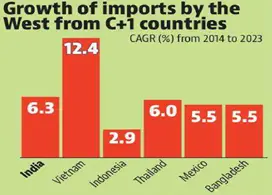
- Business Perception:
- Challenges: Despite having abundant resources and strategic planning, India has struggled to create a positive impression among businesses relocating from China.
- Competitors: Vietnam and Thailand have emerged as more attractive destinations for businesses.

- Tariff Rates:
- High Tariffs: India’s higher tariff rates, averaging 14.7% for non-agricultural products, have deterred Western investors.
- Inverted Duty Structure: The inverted duty structure in India, where taxes on imported raw materials are higher than those on final products, reduces the competitiveness of Indian exports.
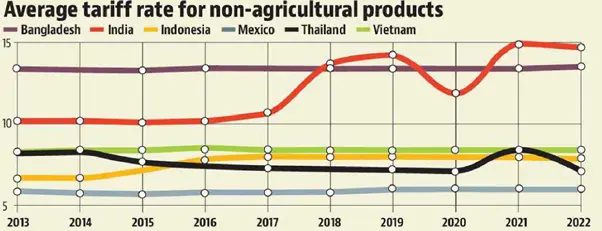
- Promising Future Prospects:
- Interest from Companies: India has emerged as the most favoured destination for companies planning to relocate production or invest in new facilities in Asia, with 28 companies showing interest compared to 23 for Vietnam.
- Electronics Sector: Notably, a significant portion of these interested firms (8 out of 28) are from the electronics sector, an area where India has previously lagged behind Vietnam.
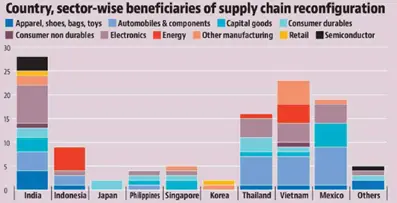
What are the factors Hindering India's Competitiveness:
- Ease of Doing Business:
- Regulatory Environment: India's complex regulatory environment, marked by bureaucratic hurdles and inconsistent policy implementation, deters both domestic and foreign investors.
- Manufacturing Competitiveness:
- High Input Costs: India faces significant challenges in manufacturing competitiveness due to high input costs.
- Inadequate Infrastructure: Poor infrastructure increases operational costs and reduces business efficiency.
- Skilled Labour Shortage: There is a shortage of skilled labour, affecting productivity and quality.
- Infrastructure Deficiencies:
- Transportation and Logistics: Poor transportation and logistics infrastructure hinder efficiency and increase costs.
- Energy Infrastructure: Inadequate energy infrastructure results in unreliable power supply, affecting operations.
- Labour Market Rigidities:
- Restrictive Labour Laws: Restrictive labour laws hinder flexibility and job creation, especially in the organised sector.
- Tax Structure:
- Complex Tax Regime: The complex tax regime, including multiple indirect taxes, adds to the cost of doing business.
- Land Acquisition Challenges:
- Cumbersome Process: The cumbersome process of land acquisition for industrial projects delays investments and raises costs.
Way Forward:
- Targeted Incentives and Subsidies:
- Attractive Incentives: Offer incentives and subsidies, particularly in electronics, automotive, and pharmaceuticals, including tax benefits, land subsidies, and infrastructure support.
- Improve Ease of Doing Business:
- Streamline Regulatory Processes: Focus on reducing bureaucratic hurdles, simplifying labour laws, and easing land acquisition procedures.
- Enhance Environmental Clearances: Simplify procedures to enhance the overall ease of doing business.
- Develop Specialised Industrial Clusters:
- Dedicated Clusters: Create industrial clusters or manufacturing hubs with world-class infrastructure and support services.
- Shared Facilities: Include plug-and-play facilities, common testing and certification centres, and shared logistics infrastructure.
- Invest in Skill Development:
- Vocational Training: Strengthen vocational training programs in collaboration with industry.
- Promote STEM Education: Focus on promoting STEM education and upskilling the existing workforce.
- Enhance Infrastructure and Logistics:
- Modern Transportation Networks: Invest in roads, railways, ports, and airports.
- Reliable Utilities: Improve the reliability and availability of power supply, water, and other essential utilities.
- Streamline Trade Policies and Agreements:
- Free Trade Agreements: Negotiate FTAs with key trading partners to improve market access.
- Simplify Import-Export Procedures: Reduce tariffs and streamline procedures to enhance global competitiveness.
- Promote Research and Innovation:
- Public-Private Partnerships: Encourage partnerships in R&D to foster innovation.
- Incentives for R&D Centers: Provide incentives for companies to establish R&D centres and collaborate with academic institutions.
Conclusion
The China+1 strategy presents a crucial opportunity for India to address its longstanding manufacturing sector challenges and emerge as a global manufacturing powerhouse. By tackling key bottlenecks and implementing a comprehensive strategy, India can leverage this trend to drive sustainable economic growth and job creation, cementing its position as a preferred manufacturing destination.
|
UPSC Civil Services Examination Previous Year Question (PYQ) Prelims Q:1 What is the importance of developing Chabahar Port by India? (2017)
Ans: (c)
Mains Q:1 A number of outside powers have entrenched themselves in Central Asia, which is a zone of interest to India. Discuss the implications, in this context, of India’s joining the Ashgabat Agreement. (2018) |
Share the article
Edukemy’s Current Affairs Quiz is published with multiple choice questions for UPSC exams
MCQ
Get Latest Updates on Offers, Event dates, and free Mentorship sessions.

Get in touch with our Expert Academic Counsellors 👋
FAQs
UPSC Daily Current Affairs focuses on learning current events on a daily basis. An aspirant needs to study regular and updated information about current events, news, and relevant topics that are important for UPSC aspirants. It covers national and international affairs, government policies, socio-economic issues, science and technology advancements, and more.
UPSC Daily Current Affairs provides aspirants with a concise and comprehensive overview of the latest happenings and developments across various fields. It helps aspirants stay updated with current affairs and provides them with valuable insights and analysis, which are essential for answering questions in the UPSC examinations. It enhances their knowledge, analytical skills, and ability to connect current affairs with the UPSC syllabus.
UPSC Daily Current Affairs covers a wide range of topics, including politics, economics, science and technology, environment, social issues, governance, international relations, and more. It offers news summaries, in-depth analyses, editorials, opinion pieces, and relevant study materials. It also provides practice questions and quizzes to help aspirants test their understanding of current affairs.
Edukemy's UPSC Daily Current Affairs can be accessed through:
- UPSC Daily Current Affairs can be accessed through Current Affairs tab at the top of the Main Page of Edukemy.
- Edukemy Mobile app: The Daily Current Affairs can also be access through Edukemy Mobile App.
- Social media: Follow Edukemy’s official social media accounts or pages that provide UPSC Daily Current Affairs updates, including Facebook, Twitter, or Telegram channels.

